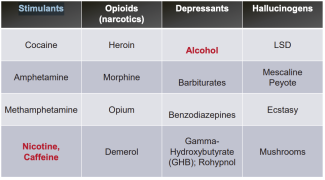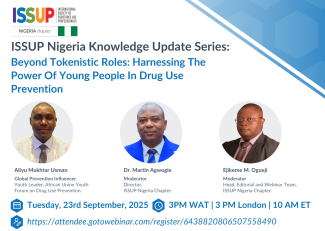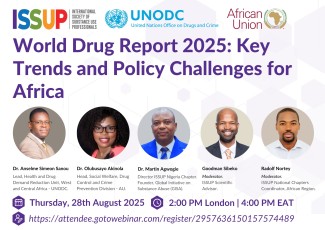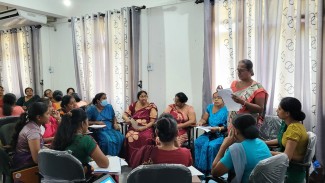Reducing the risk factors and enhancing the protective factors associated with initiating substance use.
Prevention
Prioritizing Abstinence-Based Prevention, Regulation, and Recovery to Reduce Substance-Related Harm and Promote Mental Health at a Population-Level
Abstract: This commentary argues the need to prioritize regulation and abstinence-based prevention and recovery as critical services in efforts to maximize the reduction of substance-related harm and the promotion of mental health at a...

Classification of Psychoactive Substances
This section from the UPC 2 Physiology and Pharmacology for Prevention Professionals (p130-133) introduces the main types of psychoactive substances, explains their effects on the brain and body, and clarifies that some commonly used legal...

Safeguarding the Demographic Bonus: BNN's Prevention Strategy for Children, Youth, and Communities
This presentation was featured at Indonesia 2025, on the 18.09.2025. Author: Tri Julianto Djatiutomo Abstract: Indonesia is currently in a demographic bonus period, where the majority of the population is of productive age. This window...
ISSUP Nigeria Knowledge Update Series (29th Session): Beyond Tokenistic Roles: Harnessing The Power of Young People in Drug Use Prevention
ISSUP Nigeria presents the 29th session of its bi-monthly webinar in the Knowledge Update Series. This webinar will focus on the topic 'Beyond Tokenistic Roles: Harnessing The Power of Young People in Drug Use Prevention'.
ISSUP Nigeria Knowledge Update Series (29th Session): Beyond Tokenistic Roles: Harnessing The Power of Young People in Drug Use Prevention
ISSUP Nigeria would like to invite you to the 29th session of its bi-monthly webinar in the Knowledge Update Series. This webinar will focus on the topic 'Beyond Tokenistic Roles: Harnessing The Power of Young People in Drug Use Prevention'.

World Drug Report 2025: Webinar on Key Trends and Policy Challenges for Africa
As a follow-up to our previous webinar outlining the Key Findings of the World Drug Report 2025, ISSUP on 28 August 2025 presented a review of the World Drug Report 2025 through an African lens. The webinar was moderated by Radolf Nortey...

Three-day Teacher TOT, Second Phase in Kurunagala District
Preventive Education and Training Division of National Dangerous Drugs Control Board collaboratively with Ministry of Health, Sri Lanka has conducted a Three-day TOT program for counseling teachers in kurunagala District (Second Phase)...

Three-day Teacher TOT Program, First Phase in Kurunagala District
Preventive Education and Training Division of National Dangerous Drugs Control Board collaboratively with Ministry of Health, Sri Lanka has conducted a Three-day TOT program for counseling teachers in kurunagala District. Substance abuse...

ALCOHOL PACKAGING IN AFRICA-By Rogers Kasirye (Ph.D.) Uganda Youth Development Link
•Brief background on alcohol packaging in Africa •Why packaging matters (health, environment, access, policy) •Scope of discussion •Sachet Ban, •Impact and challenges •Recommendations
STRENGTHENING SOBRIETY TO STRENGTHEN ADDICTION PREVENTION.
STRENGTHENING SOBRIETY TO STRENGTHEN ADDICTION PREVENTION. Working with young people over the years—teenagers in high schools, students in colleges, and community youth in different neighborhoods—I have learned something powerful: the...

